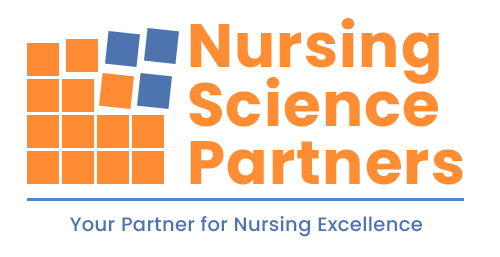

Nurses and healthcare providers face nonstop decisions with real consequences. There’s no room for guesswork when patients’ lives are at stake. However, sticking to old routines or relying on gut feelings can lead to inconsistency and avoidable risks. The pressure to provide safer, more accurate care is growing every day. Thoughtful, timely decisions guided by evidence make the difference that patients can feel.
What Evidence-Based Practices Really Mean in Healthcare
Modern healthcare demands more than tradition and experience. Evidence-based practices (EBPs) provide providers with a clear and purposeful approach. They integrate clinical expertise, research findings, and patient values into a unified decision-making model. That means care isn’t just informed; it’s intentional, tested, and trustworthy.
From Buzzword to Bedside Application
Evidence-based practice has become a widely used term, but its meaning is often misunderstood. At its core, it’s a decision-making process built on the best current evidence. It includes peer-reviewed studies, clinical trials, and patient feedback. Unlike methods based purely on intuition or habit, EBPs require continuous reflection and refinement. For nurses, this means choosing actions that have been tested and proven in similar settings. The result is more precise, consistent care tailored to each patient.
The Core Principles Driving Evidence-Based Decisions
EBPs follow a repeatable five-step cycle: ask, acquire, appraise, apply, and assess. Each step brings clarity and structure to what could otherwise be a chaotic situation. Providers identify the clinical question, search for relevant research, evaluate its quality, apply findings in practice, and review outcomes. This process supports accountability and ongoing improvement. Additionally, it encourages collaboration between nurses, educators, and consultants. Together, they shape decisions that balance research, judgment, and patient needs.
How Evidence-Based Practices Directly Improve Outcomes
Using evidence-based practices in everyday care helps reduce guesswork and uncertainty. Instead of relying on routines or outdated methods, teams act based on proof. This approach leads to improved accuracy, consistency, and treatment adherence. As a result, patients experience care that’s more reliable, safer, and aligned with their needs.
Reduces Variability in Clinical Care
Inconsistent care often results from personal habits or institutional gaps. One nurse might follow a routine that another avoids entirely. EBPs solve this by offering a structured, uniform path for everyone involved. These frameworks promote equity without stripping away professional flexibility. Similarly, they provide a common language for teams across shifts and departments. As a result, patients receive the same high-quality care, regardless of who’s treating them.
Increases Patient Safety and Reduces Harm
One powerful outcome of EBPs is the reduction of preventable harm. Tools such as safety checklists and infection control bundles make this possible. When teams follow proven protocols, they close gaps that lead to errors. For instance, standardizing medication administration can cut dosing mistakes in half. In fall prevention programs, using validated risk assessments helps protect vulnerable patients. This proactive approach turns safety into a shared priority across every level of care.

Improves Chronic Disease Management
Chronic illnesses require steady, targeted intervention. EBPs provide nurses and providers with reliable strategies for achieving long-term success. Instead of general advice, patients receive personalized care plans tailored to the latest research findings and evidence. For example, evidence supports the use of structured diabetes education programs and regular follow-up to prevent complications. Similarly, patients with heart failure benefit from guideline-driven monitoring and medication adjustments. This focused approach helps patients stay stable, informed, and engaged in their care.
Enhances Interdisciplinary Communication
When everyone uses the same evidence-based framework, communication improves. Nurses, physicians, pharmacists, and therapists align more easily on care plans. This shared approach prevents mixed messages and duplicated efforts. It also helps clarify priorities, especially during handoffs or transitions of care. Additionally, using the same tools and language reduces errors caused by miscommunication. In the end, the entire team functions more smoothly, which patients can feel.
Strengthens Patient Involvement and Trust
EBPs don’t ignore patient values—they include them. When patients understand that their care is based on research, their confidence increases. They’re more likely to ask questions, follow instructions, and participate in their recovery. Explaining why a treatment works, based on evidence, improves understanding and cooperation. Similarly, shared decision-making builds trust and openness. That relationship leads to higher satisfaction and often better results.
Barriers to Implementing Evidence-Based Practices
Even the best ideas can stall without the right systems and support in place. Nurses may want to use evidence-based practices (EBPs) but often struggle with limited time, inadequate tools, or a lack of buy-in from leadership. Recognizing the challenges is the first step toward solving them. Removing these obstacles opens the door to more efficient, impactful care.
Time Constraints and Workload Pressures
High patient loads and back-to-back tasks limit research opportunities. It’s hard to search journals or review guidelines during a busy shift. This time crunch discourages exploration and reinforces outdated habits. However, consultation services help fill the gap by providing fast and focused support. With curated insights and actionable summaries, teams can access research without the burden of doing it all themselves. That saves time while boosting care quality.
Resistance to Change and Cultural Hurdles
Some teams resist evidence-based practices (EBPs) because they disrupt familiar patterns of behavior. Change often brings fear, especially when tied to job performance or long-standing routines. Leaders must work to create environments that welcome growth and learning. Regular discussions, peer role models, and education sessions can help shift attitudes. Additionally, sharing small wins from EBP initiatives can build momentum. Over time, open-mindedness becomes part of the unit’s culture.
Gaps in Training and Knowledge Translation
Many clinicians were never taught how to evaluate studies or apply findings. Without these skills, even outstanding research can go unused. Consultation services can offer hands-on support, breaking down complex data into practical steps. They also guide teams in interpreting relevance and avoiding misapplication of the concept. Workshops, mentoring, and follow-up sessions reinforce learning over time, ensuring a lasting impact. Eventually, confidence grows, and the fear of “getting it wrong” fades.

The Role of Consultation Services in Evidence-Based Practice
EBP doesn’t happen in isolation. Nurses and providers benefit from expert guidance to move from theory to action. Consultation teams support each step, from asking better questions to applying better answers. They serve as partners, not just resources, for making evidence a part of everyday care.
Guiding Clinical Inquiry From Question to Action
It starts with the right question. Consultants help teams turn vague problems into precise clinical questions. Tools like the PICO format clarify who the patient is, what intervention to test, what to compare it to, and the outcome to measure. This sharp focus streamlines research and boosts relevance. Instead of wading through dozens of articles, teams zero in on what matters most. That yields faster and more valuable results.
Translating Research Into Practice Without the Overload
Research can feel dense, overwhelming, and disconnected from reality. Consultants act as interpreters, distilling key takeaways into clear, actionable strategies. They tailor evidence to fit the specific setting and patient group. For example, a pediatric unit might need different guidance than a surgical floor. This adaptability makes EBPs more likely to be used consistently. Additionally, it prevents overload and encourages action.
Building Confidence and Capability Across Teams
Beyond offering answers, consultants build internal capacity. It involves helping teams learn how to ask more effective questions, analyze data, and evaluate outcomes. These skills transfer across departments, creating ripple effects over time. With support, even hesitant staff gain the tools to lead EBP initiatives. Eventually, units move from following guidelines to shaping them. This shift changes the tone from reactive to proactive.
Real-World Impact of Evidence-Based Practices
Seeing outcomes change is the strongest motivator for any clinical team. EBPs don’t just promise improvements; they deliver them in measurable, repeatable ways. From readmission rates to infection control, the benefits are proven across the board. With continued support, these wins become the new standard.
Case Studies That Prove the Point
One hospital reduced catheter-related infections by 60% after standardizing protocols. Nurses followed a step-by-step guide supported by evidence and regular audits. In another case, a rural clinic saw better blood pressure control by switching to guideline-based care plans. A third team cut sepsis mortality by acting on early warning signs flagged through research-backed screening. These outcomes weren’t theoretical; they were practical and repeatable. Each one began with a decision to ask, “What does the evidence say?”
Long-Term Gains Beyond the Initial Implementation
Immediate improvements matter, but sustained gains show actual value. EBPs build systems that adapt, self-correct, and evolve. When teams adopt a research-driven mindset, they’re less likely to slip into old habits. Performance metrics improve, staff turnover may drop, and patient satisfaction climbs. Additionally, cost savings emerge from fewer complications and readmissions. With consistent review and consultation, these practices stick and spread.
Commit to Evidence-Based Practices Before Gaps Widen
The next patient you care for doesn’t need theories; they need decisions backed by what works. Every delay in adopting evidence-based practices keeps old habits alive and lets avoidable errors slip through. Shifting toward a more research-driven model isn’t a luxury; it’s the baseline patients deserve. You don’t need to figure it out alone. Start bringing clarity into the chaos with support that helps you apply the evidence, not just read it.
Are you ready to think differently about clinical care? The Nursing Science Partners blog brings research to your workflow.
Last modified: August 22, 2025


